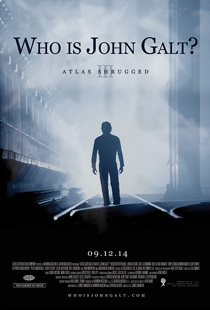Review by Michael Isenberg
 The 1990s were the age of vignette films: loosely connected collections of intersecting story lines. Notable examples were Pulp Fiction, Pret-a-Porter, and anything directed by Richard Linklater. The Simpsons even tried their hand at it, with the episode “22 Short Films about Springfield.”
The 1990s were the age of vignette films: loosely connected collections of intersecting story lines. Notable examples were Pulp Fiction, Pret-a-Porter, and anything directed by Richard Linklater. The Simpsons even tried their hand at it, with the episode “22 Short Films about Springfield.”
Haruki Murakami brings the vignette film to the printed page in his 2004 novel After Dark. Like its Hollywood forbearers, After Dark takes place in a compressed time period—a single night between midnight and 8:00 AM. Murakami and the vignette film are a match-made-in-la-la-land, both are chock full of bizarre characters and situations. In the character department, After Dark has:
- College student Mari Asai, who we first encounter as she sits in an all-night Denny’s, smoking cigarettes, reading a book, and slowly drinking coffee. She clearly does not want to go home, for reasons we have yet to learn, but they seem to have something to do with her older and more beautiful sister…
- Eri Asai. Everyone loves her; she got her first modeling job in middle school. Being a Murakami novel, there has to be at least one storyline with a supernatural aspect, and this is it. The lovely Eri has got herself trapped in an empty office inside the screen of a TV set. This is also the sequence where the resemblance to movies is most explicit—the action is narrated from the point of view of a moving camera.
- Lady wrestler Kaoru. “Built like a barn.” (As the author of my own novel with a lady wrestler heroine, how could I not love After Dark?). Now retired from the ring, Kaoru runs a “love hotel,” where a guest has just beaten up a prostitute and taken off. After seeing that the girl gets treatment for her injuries, Kaoru puzzles out how to find the client.
Towards the end, with dawn approaching, the author tells us what it’s all about:
| A cycle has been completed, all disturbances have been resolved, perplexities have been concealed, and things have returned to their original state. Around us, cause and effect join hands, and synthesis and division maintain their equilibrium. Everything, finally, unfolded in a place resembling a deep, inaccessible fissure. Such places open secret entries into darkness in the interval between midnight and the time the sky grows light. None of our principles have any effect there. No one can predict when or where such abysses will swallow people, or when or where they will spit them out. |
That may violate your English teacher’s rule, “Show, don’t tell,” but in the capable hands of Murakami, it works.
Michael Isenberg is the author of Full Asylum, a novel about politics, freedom, and hospital gowns. Check it out on Amazon.com

 Next up for a Swag Bag Review is The Chilling Adventures of Sabrina No. 1 appropriately hitting comic book stores for Halloween 2014. After last year’s debut of Afterlife with Archie, in which America’s favorite teenager and the Riverdale gang fight their way out of the a zombie apocalypse, we see the more mature occult treatment given to Sabrina the Teenage Witch. Set in the 1960’s (the decade that Sabrina stories first appeared in Archie Comics) the story takes its cues more from its horror contemporaries in the 60’s and 70’s like Rosemary’s Baby, The Little Girl that Lives Down the Lane and Dark Shadows than sit-com contemporaries Bewitched and I Dream of Jeannie. While Sabrina herself is a lovely (dare I say, ENCHANTING) young witch, her origins as laid out here are a macabre tale of Faustian deals and double crosses.
Next up for a Swag Bag Review is The Chilling Adventures of Sabrina No. 1 appropriately hitting comic book stores for Halloween 2014. After last year’s debut of Afterlife with Archie, in which America’s favorite teenager and the Riverdale gang fight their way out of the a zombie apocalypse, we see the more mature occult treatment given to Sabrina the Teenage Witch. Set in the 1960’s (the decade that Sabrina stories first appeared in Archie Comics) the story takes its cues more from its horror contemporaries in the 60’s and 70’s like Rosemary’s Baby, The Little Girl that Lives Down the Lane and Dark Shadows than sit-com contemporaries Bewitched and I Dream of Jeannie. While Sabrina herself is a lovely (dare I say, ENCHANTING) young witch, her origins as laid out here are a macabre tale of Faustian deals and double crosses.
 With great artwork (the color scheme predominantly in the “Halloween Colors” of black, orange and white) and writing reminiscent of the creepiest pre-code Tales from the Crypt stories, this was certainly a treat to receive in the swag bag this year. In contrast to the action packed survival horror of Afterlife with Archie this book is taking its time brewing up a cauldron of horrors on a slow simmer that will pay off later.
With great artwork (the color scheme predominantly in the “Halloween Colors” of black, orange and white) and writing reminiscent of the creepiest pre-code Tales from the Crypt stories, this was certainly a treat to receive in the swag bag this year. In contrast to the action packed survival horror of Afterlife with Archie this book is taking its time brewing up a cauldron of horrors on a slow simmer that will pay off later.  After my
After my  Once again, in spite of my best intentions for Nerds Who Read, I find myself reviewing a political book. I blame Amazon. It told me that Edyl – Island of Immortality by Mark Capell was “Recommended for You.” So I downloaded to my Kindle and started reading.
Once again, in spite of my best intentions for Nerds Who Read, I find myself reviewing a political book. I blame Amazon. It told me that Edyl – Island of Immortality by Mark Capell was “Recommended for You.” So I downloaded to my Kindle and started reading.

